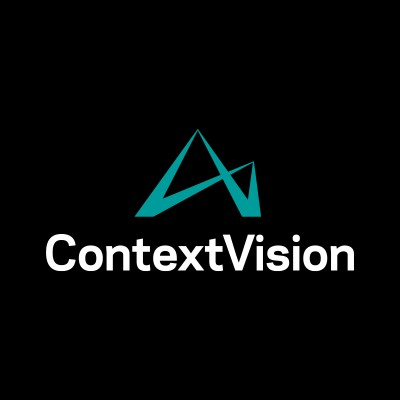ContextVision's Strategic Leap: Transforming Ultrasound Diagnostics for Liver Disease
April 9, 2025, 11:01 am

Location: United States, Washington, Seattle
Employees: 10001+
Founded date: 1861
Total raised: $800K
In the world of medical imaging, ContextVision is making waves. The company has recently forged partnerships with the University of Waterloo in Canada and InPhase Solutions AS in Norway. These alliances aim to enhance ultrasound diagnostics for metabolic dysfunction-associated steatotic liver disease (MASLD). This is not just a business move; it’s a step toward revolutionizing how we diagnose liver diseases.
ContextVision is a heavyweight in medical imaging solutions. With a focus on artificial intelligence (AI), the company is setting the stage for a new era in ultrasound diagnostics. The recent agreements are designed to optimize data quality, a crucial factor in diagnosing MASLD. This disease is a silent epidemic, affecting about 25% of the global population. As such, the need for accessible and non-invasive diagnostic tools has never been more pressing.
The partnership with the University of Waterloo’s Laboratory on Innovative Technology in Medical Ultrasound (LITMUS) is a cornerstone of this initiative. This collaboration will bring together technical expertise and clinical insights. The goal? To push the boundaries of liver imaging. The University of Waterloo is known for its cutting-edge research. By joining forces, both entities can leverage their strengths to create advanced imaging techniques.
InPhase Solutions AS, based in Norway, adds another layer of expertise. This company specializes in ultrasound technology development. Their role will be to enhance ContextVision’s internal research and development efforts. This partnership is about more than just technology; it’s about creating a robust ecosystem for liver disease diagnostics.
The collaboration aims to produce AI-driven solutions that can interpret organ-specific ultrasound datasets. This is where the magic happens. By optimizing data quality, ContextVision hopes to improve diagnostic precision. The use of AI in this context is like adding a magnifying glass to a blurry image. It sharpens the details, making it easier for clinicians to make informed decisions.
ContextVision’s focus on data quality marks a strategic shift. Traditionally, the company has excelled in image quality. However, the landscape of medical diagnostics is changing. In January 2025, ContextVision announced its first major research partnership with the University of Washington’s School of Medicine. This collaboration aimed to develop ultrasound-based biomarkers for MASLD. The new agreements with LITMUS and InPhase Solutions build on this foundation, signaling a commitment to advancing disease quantification.
The CEO of ContextVision, Gerald Pötzsch, emphasizes the importance of building a strong research ecosystem. This is not just about technology; it’s about collaboration. By uniting academic expertise with industry capabilities, ContextVision is laying the groundwork for groundbreaking innovations. The partnerships represent the beginning of a growing network that aims to expand further in the near future.
The implications of these advancements are significant. MASLD is often underdiagnosed and overlooked. Traditional diagnostic methods can be invasive and uncomfortable for patients. By focusing on non-invasive ultrasound techniques, ContextVision is addressing a critical gap in the healthcare system. The potential for improved patient outcomes is immense.
Imagine a world where liver disease can be diagnosed with the same ease as a routine check-up. This is the vision that ContextVision is working toward. The company’s commitment to enhancing ultrasound diagnostics is a beacon of hope for patients and healthcare providers alike.
The collaboration with LITMUS and InPhase Solutions is not just a strategic business move; it’s a response to a growing demand. As the prevalence of MASLD rises, so does the need for effective diagnostic solutions. ContextVision’s work in data quality and quantitative imaging aims to bridge this gap. By leveraging AI-driven analysis, the company seeks to enhance diagnostic precision and improve patient outcomes.
In the grand scheme of things, these partnerships are a step toward a healthier future. They represent a convergence of technology, research, and clinical practice. The integration of AI into ultrasound diagnostics is like adding a new dimension to an existing picture. It opens up possibilities that were previously unimaginable.
As ContextVision continues to innovate, the medical community watches closely. The potential for life-changing solutions is within reach. The partnerships with the University of Waterloo and InPhase Solutions are just the beginning. They signal a commitment to advancing ultrasound diagnostics and improving the quality of care for patients with liver disease.
In conclusion, ContextVision is at the forefront of a transformative movement in medical imaging. The partnerships formed with leading institutions are not just about technology; they are about creating a future where liver disease can be diagnosed swiftly and accurately. As the company pushes the boundaries of ultrasound diagnostics, the hope is that more lives can be saved, and more patients can receive the care they need. The journey has just begun, but the destination is clear: a world where liver disease is no longer a silent killer.
ContextVision is a heavyweight in medical imaging solutions. With a focus on artificial intelligence (AI), the company is setting the stage for a new era in ultrasound diagnostics. The recent agreements are designed to optimize data quality, a crucial factor in diagnosing MASLD. This disease is a silent epidemic, affecting about 25% of the global population. As such, the need for accessible and non-invasive diagnostic tools has never been more pressing.
The partnership with the University of Waterloo’s Laboratory on Innovative Technology in Medical Ultrasound (LITMUS) is a cornerstone of this initiative. This collaboration will bring together technical expertise and clinical insights. The goal? To push the boundaries of liver imaging. The University of Waterloo is known for its cutting-edge research. By joining forces, both entities can leverage their strengths to create advanced imaging techniques.
InPhase Solutions AS, based in Norway, adds another layer of expertise. This company specializes in ultrasound technology development. Their role will be to enhance ContextVision’s internal research and development efforts. This partnership is about more than just technology; it’s about creating a robust ecosystem for liver disease diagnostics.
The collaboration aims to produce AI-driven solutions that can interpret organ-specific ultrasound datasets. This is where the magic happens. By optimizing data quality, ContextVision hopes to improve diagnostic precision. The use of AI in this context is like adding a magnifying glass to a blurry image. It sharpens the details, making it easier for clinicians to make informed decisions.
ContextVision’s focus on data quality marks a strategic shift. Traditionally, the company has excelled in image quality. However, the landscape of medical diagnostics is changing. In January 2025, ContextVision announced its first major research partnership with the University of Washington’s School of Medicine. This collaboration aimed to develop ultrasound-based biomarkers for MASLD. The new agreements with LITMUS and InPhase Solutions build on this foundation, signaling a commitment to advancing disease quantification.
The CEO of ContextVision, Gerald Pötzsch, emphasizes the importance of building a strong research ecosystem. This is not just about technology; it’s about collaboration. By uniting academic expertise with industry capabilities, ContextVision is laying the groundwork for groundbreaking innovations. The partnerships represent the beginning of a growing network that aims to expand further in the near future.
The implications of these advancements are significant. MASLD is often underdiagnosed and overlooked. Traditional diagnostic methods can be invasive and uncomfortable for patients. By focusing on non-invasive ultrasound techniques, ContextVision is addressing a critical gap in the healthcare system. The potential for improved patient outcomes is immense.
Imagine a world where liver disease can be diagnosed with the same ease as a routine check-up. This is the vision that ContextVision is working toward. The company’s commitment to enhancing ultrasound diagnostics is a beacon of hope for patients and healthcare providers alike.
The collaboration with LITMUS and InPhase Solutions is not just a strategic business move; it’s a response to a growing demand. As the prevalence of MASLD rises, so does the need for effective diagnostic solutions. ContextVision’s work in data quality and quantitative imaging aims to bridge this gap. By leveraging AI-driven analysis, the company seeks to enhance diagnostic precision and improve patient outcomes.
In the grand scheme of things, these partnerships are a step toward a healthier future. They represent a convergence of technology, research, and clinical practice. The integration of AI into ultrasound diagnostics is like adding a new dimension to an existing picture. It opens up possibilities that were previously unimaginable.
As ContextVision continues to innovate, the medical community watches closely. The potential for life-changing solutions is within reach. The partnerships with the University of Waterloo and InPhase Solutions are just the beginning. They signal a commitment to advancing ultrasound diagnostics and improving the quality of care for patients with liver disease.
In conclusion, ContextVision is at the forefront of a transformative movement in medical imaging. The partnerships formed with leading institutions are not just about technology; they are about creating a future where liver disease can be diagnosed swiftly and accurately. As the company pushes the boundaries of ultrasound diagnostics, the hope is that more lives can be saved, and more patients can receive the care they need. The journey has just begun, but the destination is clear: a world where liver disease is no longer a silent killer.

